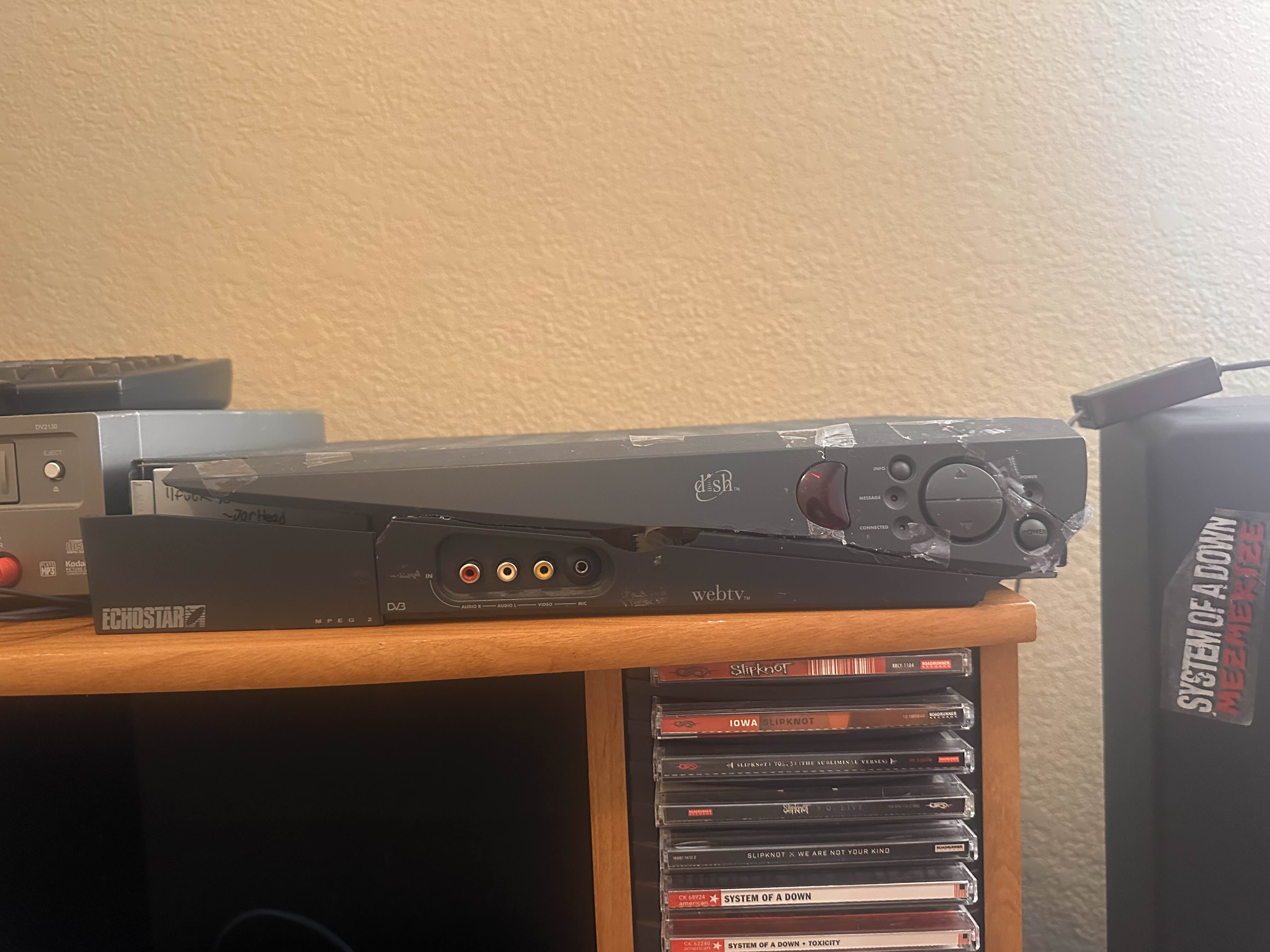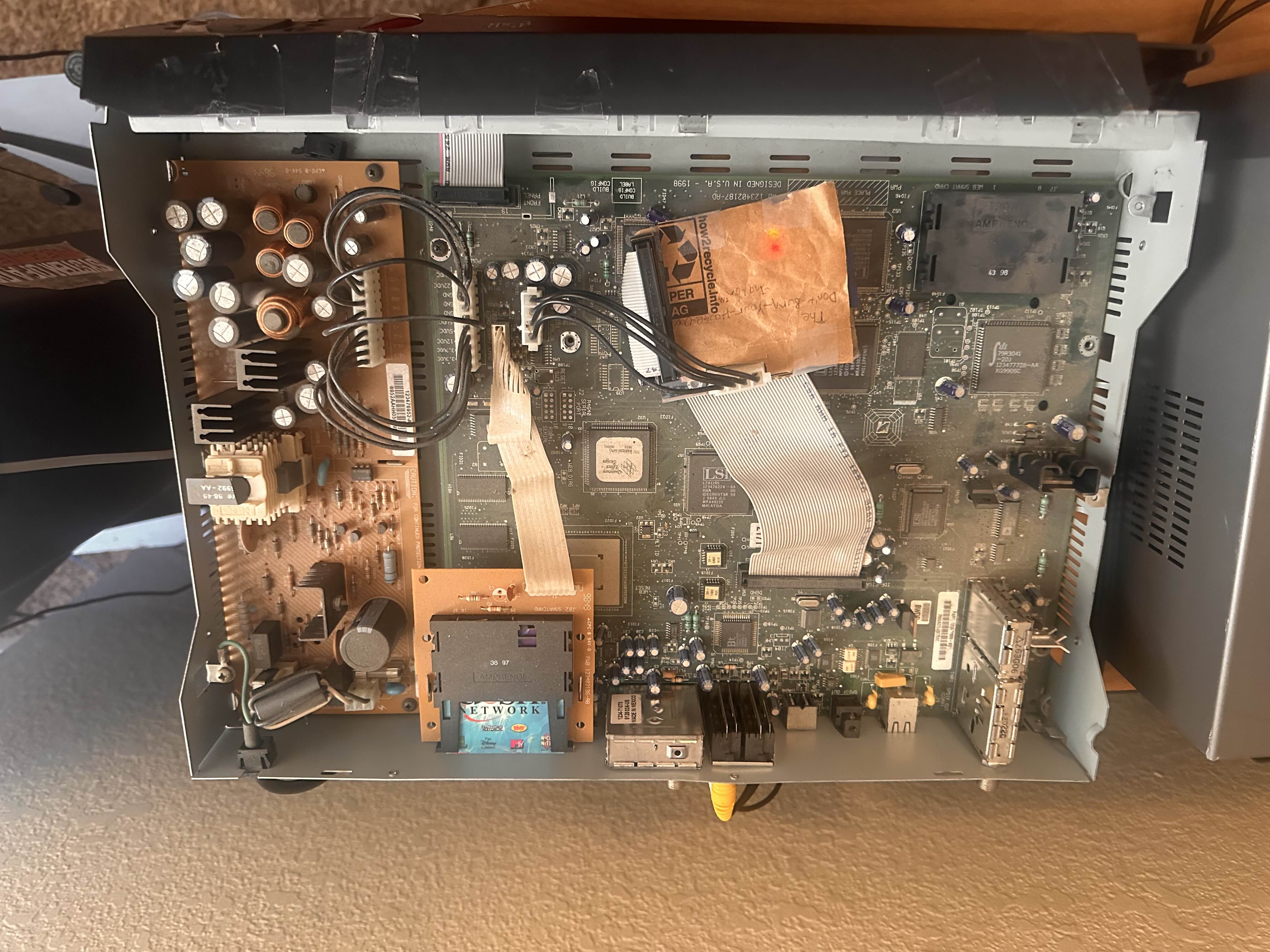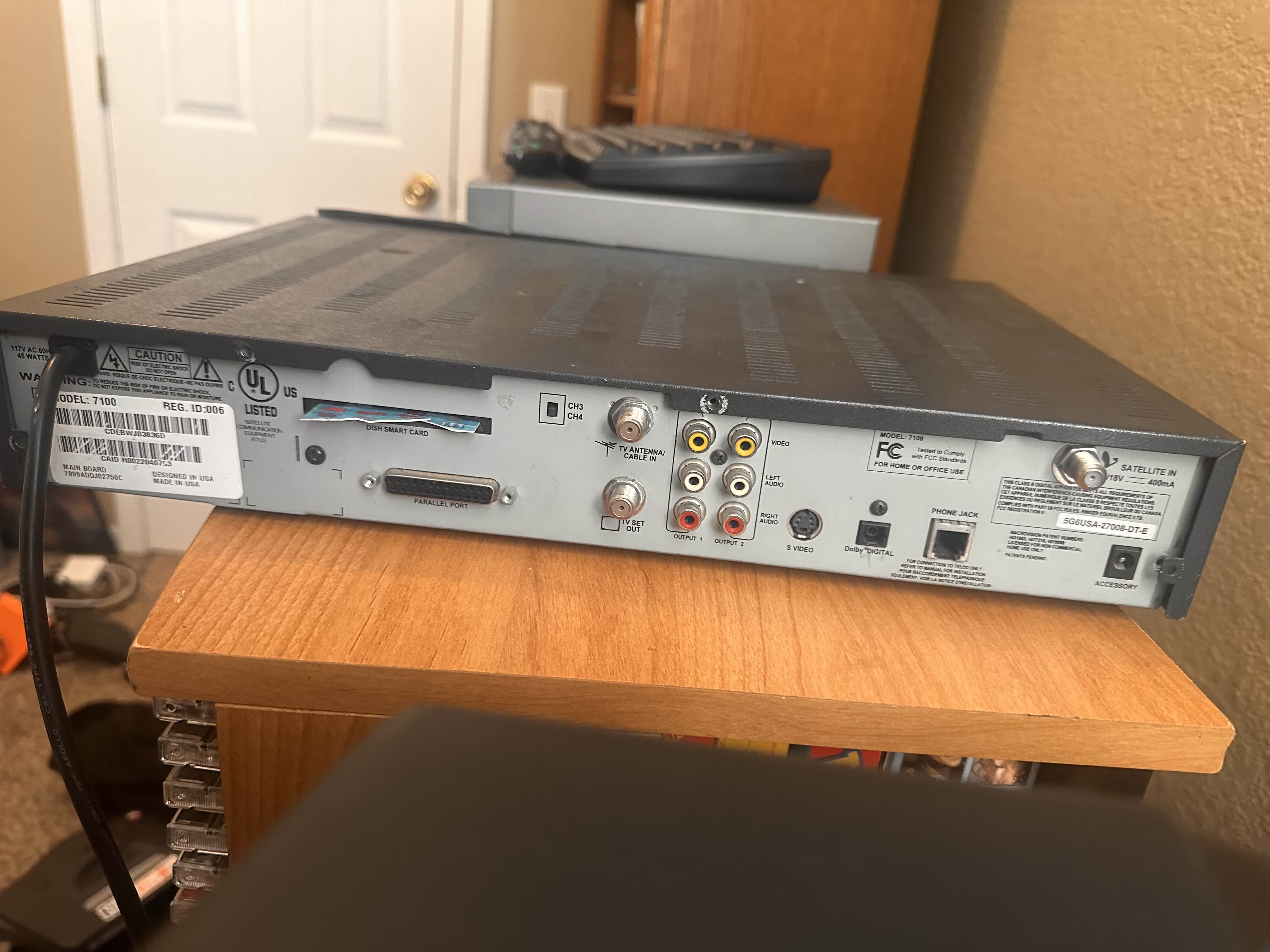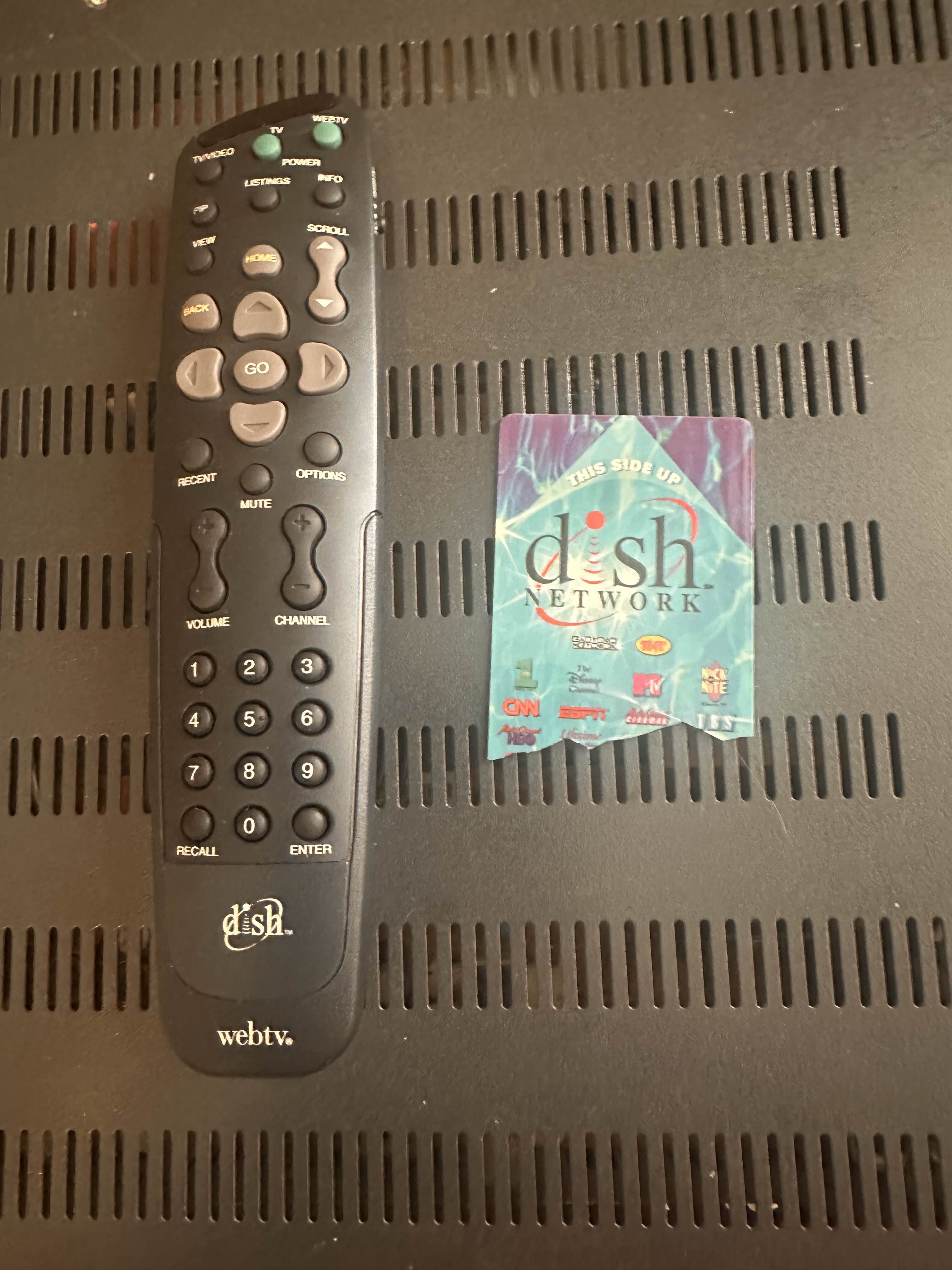Hardware Models/DishPlayer: Difference between revisions
No edit summary |
|||
| (2 intermediate revisions by one other user not shown) | |||
| Line 1: | Line 1: | ||
The EchoStar DishPlayer | The EchoStar DishPlayer (also branded by JVC on some models) 7100 and 7200 are a combination Dish satellite TV receiver and WebTV Plus Receiver, introduced in 1999. Similar to WebTV Old Plus units, they contains an IDE hard drive, however instead of the standard over-the-air TV tuner, they include satellite inputs to connect to Dish's satellite television services. They also contain a much larger hard drive specifically for recording shows onto. | ||
== Technical Specifications == | == Technical Specifications == | ||
| Line 7: | Line 7: | ||
* 16 MB RAM | * 16 MB RAM | ||
* 4 MB ROM | * 4 MB ROM | ||
* 8.6 GB HDD | * 8.6 GB (7100) or 17.6GB (7200) HDD | ||
* Two smart card slots (one on back for Dish functionality, one on front for WebTV functionality) | * Two smart card slots (one on back for Dish functionality, one on front for WebTV functionality) | ||
== Differences == | == Differences == | ||
The | The DishPlayers are the only Old Plus unit to contain 16MB of RAM, as typical Old Plus units only contained 8MB, and only later New Plus units had 16MB. They also have a bigger capacity hard drive for digital TV recordings, as well as trick play features such as "TV Pause," which allowed pausing a live show for up to 30 minutes. | ||
The | The units also have two AV outputs, with the intention of one going to your TV and one going to a VCR. Despite the units including much larger hard drives for digital recordings, it still has the ability to control a VCR via an IR blaster to record shows onto tape. The AV in and mic jack were moved to the front, and unlike typical Plus units, there is no way to preview the AV inputs or control a VCR manually. | ||
They also have two smart card slots, one on the front which is connected to the WebTV, and one on the back which is tied to the Dish TV functionality. They also won't function without the Dish smart card inserted, asking the user to turn it off and insert one into the back if one isn't detected. | |||
It also seems the DishPlayers use a earlier 1.0/1.1 soundfont/reverb logic That dates back to the pre-alpha days of WebTV for no discernible reason | |||
== Games == | == Games == | ||
Latest revision as of 10:48, 23 September 2025
The EchoStar DishPlayer (also branded by JVC on some models) 7100 and 7200 are a combination Dish satellite TV receiver and WebTV Plus Receiver, introduced in 1999. Similar to WebTV Old Plus units, they contains an IDE hard drive, however instead of the standard over-the-air TV tuner, they include satellite inputs to connect to Dish's satellite television services. They also contain a much larger hard drive specifically for recording shows onto.
Technical Specifications
- RM5230 CPU clocked at 167 MHz
- V.90 softmodem
- 16 MB RAM
- 4 MB ROM
- 8.6 GB (7100) or 17.6GB (7200) HDD
- Two smart card slots (one on back for Dish functionality, one on front for WebTV functionality)
Differences
The DishPlayers are the only Old Plus unit to contain 16MB of RAM, as typical Old Plus units only contained 8MB, and only later New Plus units had 16MB. They also have a bigger capacity hard drive for digital TV recordings, as well as trick play features such as "TV Pause," which allowed pausing a live show for up to 30 minutes.
The units also have two AV outputs, with the intention of one going to your TV and one going to a VCR. Despite the units including much larger hard drives for digital recordings, it still has the ability to control a VCR via an IR blaster to record shows onto tape. The AV in and mic jack were moved to the front, and unlike typical Plus units, there is no way to preview the AV inputs or control a VCR manually.
They also have two smart card slots, one on the front which is connected to the WebTV, and one on the back which is tied to the Dish TV functionality. They also won't function without the Dish smart card inserted, asking the user to turn it off and insert one into the back if one isn't detected.
It also seems the DishPlayers use a earlier 1.0/1.1 soundfont/reverb logic That dates back to the pre-alpha days of WebTV for no discernible reason
Games
The DishPlayer units were the only WebTV devices that officially got the ports of Doom and You Don't Know Jack, being offered on the TV Home screen via a Games button. From what we know, the games and updates for them would be checked weekly. Unlike the testing versions of these games for regular Old Plus units, updates for You Don't Know Jack were either planned or tested, with the DishPlayer version being based on You Don't Know Jack: The NetShow. It also included a version of Klondike solitaire, which interestingly is included inside of Doom's files, and is simply run by launching Doom with a special -solitaire argument.
Pictures



